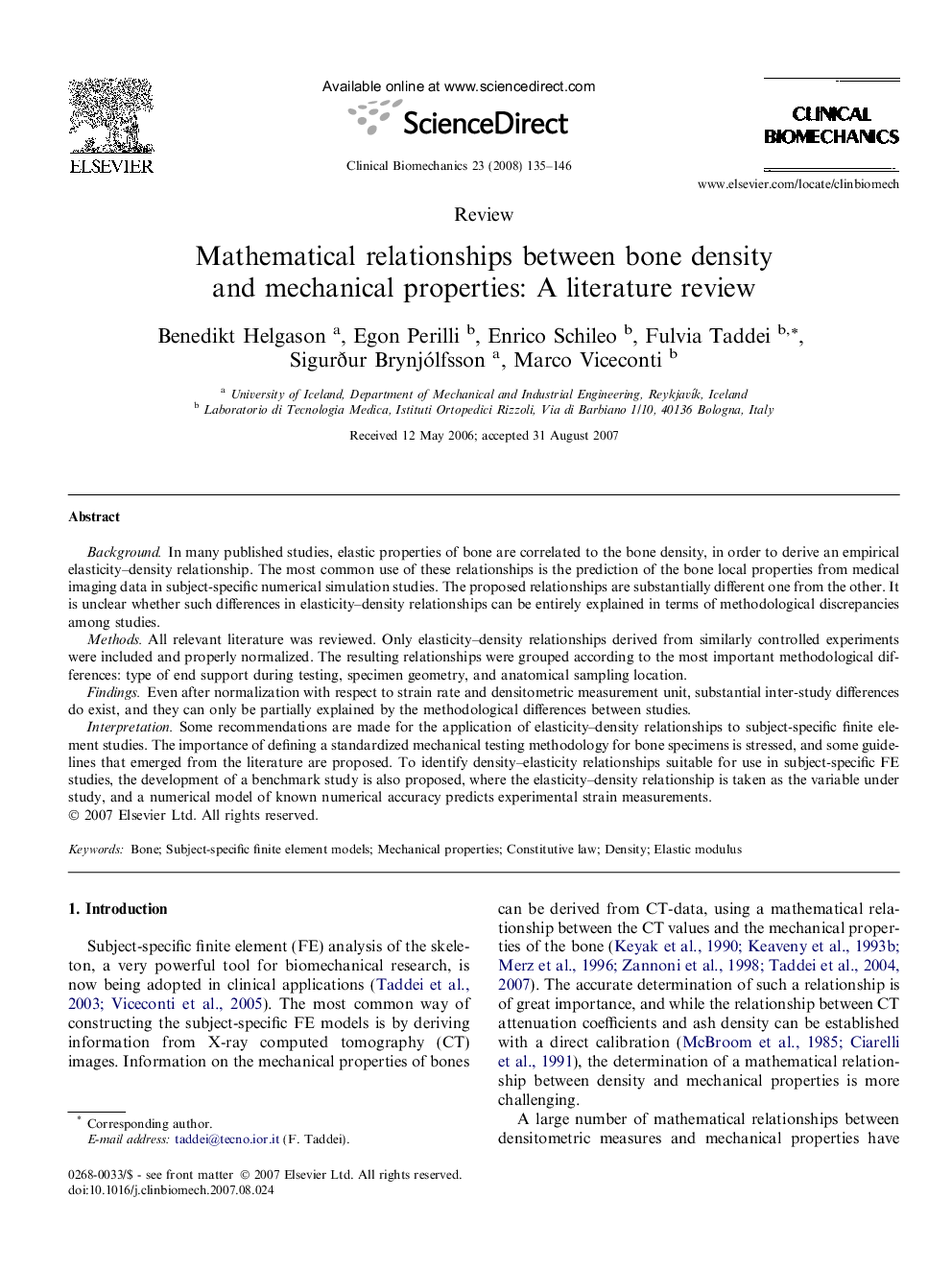| Article ID | Journal | Published Year | Pages | File Type |
|---|---|---|---|---|
| 4051124 | Clinical Biomechanics | 2008 | 12 Pages |
BackgroundIn many published studies, elastic properties of bone are correlated to the bone density, in order to derive an empirical elasticity–density relationship. The most common use of these relationships is the prediction of the bone local properties from medical imaging data in subject-specific numerical simulation studies. The proposed relationships are substantially different one from the other. It is unclear whether such differences in elasticity–density relationships can be entirely explained in terms of methodological discrepancies among studies.MethodsAll relevant literature was reviewed. Only elasticity–density relationships derived from similarly controlled experiments were included and properly normalized. The resulting relationships were grouped according to the most important methodological differences: type of end support during testing, specimen geometry, and anatomical sampling location.FindingsEven after normalization with respect to strain rate and densitometric measurement unit, substantial inter-study differences do exist, and they can only be partially explained by the methodological differences between studies.InterpretationSome recommendations are made for the application of elasticity–density relationships to subject-specific finite element studies. The importance of defining a standardized mechanical testing methodology for bone specimens is stressed, and some guidelines that emerged from the literature are proposed. To identify density–elasticity relationships suitable for use in subject-specific FE studies, the development of a benchmark study is also proposed, where the elasticity–density relationship is taken as the variable under study, and a numerical model of known numerical accuracy predicts experimental strain measurements.
